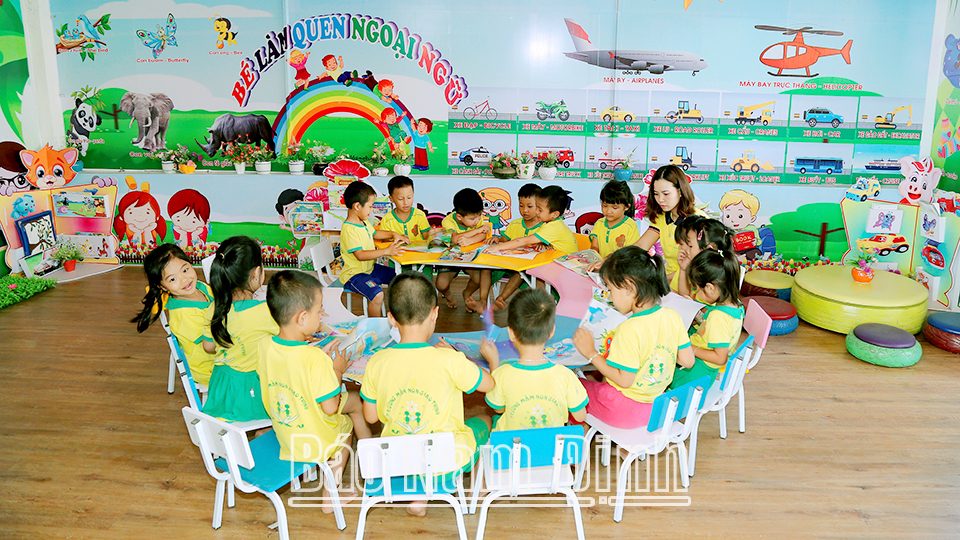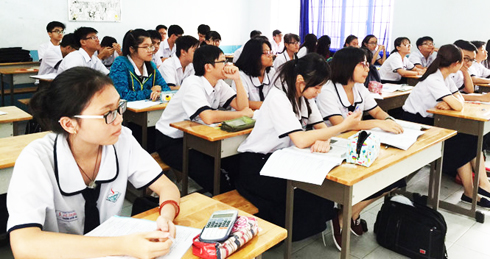What is the maximum number of children in daycare groups or kindergarten classes in Vietnam? - Van An (Binh Duong)
What is the maximum number of children in daycare groups or kindergarten classes in Vietnam?
Pursuant to the provisions of Article 14 of Circular 49/2021/TT-BGDĐT, children in an independent nursery education institution are categorized into daycare groups or kindergarten classes.
(i) For daycare groups: Children from 03 to 36 months old shall be placed in daycare groups. The maximum number of children in a daycare group:
- Daycare group from 03 to 12 months old: 12 children;
- Daycare group from 13 to 24 months old: 20 children;
- Daycare group from 25 to 36 months old: 25 children.
(ii) For kindergarten classes: Children from 03 years to 06 years old shall be placed in kindergarten classes. The maximum number of children in a kindergarten class:
- Kindergarten class from 3 to 4 years old: 25 children;
- Kindergarten class from 4 to 5 years old: 30 children;
- Kindergarten class from 5 to 6 years old: 35 children.
Note:
- If the number of children in a category of daycare group or kindergarten class is less than a half of the maximum number mentioned above, then mix categories of daycare group or kindergarten class provided up to 20 children in a mixed-category daycare group, up to 30 children in a mixed-category kindergarten class, or up to 22 children in a mixed-category nursery class.
- Each daycare group or kindergarten class has no more than 01 child with disabilities who receives mainstream education.
- If a facility has not enough children to place in a daycare group or a kindergarten class as prescribed in this Article, the number of nursery teachers required shall be determined based on the average number of children by their ages of each category of daycare group or kindergarten class, in specific:
+ For daycare groups: 01 teacher shall be in charge of 03 children from 3 to 12 months old or 08 children from 13 to 24 months old or 10 children from 25 to 36 months old;
+ For kindergarten classes: 01 teacher shall be in charge of 11 children from 3 to 4 years old or 14 children from 4 to 5 years old or 16 children from 5 to 6 years old;
- Each daycare group or kindergarten class has at least 02 teachers.
- The number of children in an independent nursery education institution does not exceed 70 children.

What is the maximum number of children in daycare groups or kindergarten classes in Vietnam? (Internet image)
Minimum facility standards for independent nursery education institutions in Vietnam
Minimum facility standards for independent nursery education institution in Vietnam as prescribed in Article 18 of Circular 49/2021/TT-BGDDT, are as follows:
- Rooms for children’s care and education (hereinafter referred to as childcare rooms): Each group or class may exclusively use a room; at least 1,5m2 per child but not smaller than 24m2;
- Restrooms: Each group or class may exclusively use a restroom; at least 0,4m2 per child; sanitary ware and appliances shall be installed in a manner easily accessible to children. In case a shared restroom must be linked to the childcare room by a corridor, it must be convenient for use and easy to observe;
- The area of indoor playground must be at least 0,5m2 per child or that of outdoor playground must be at least 1,0m2 per child;
- Places where children's meals are provided or kitchens must be at least 0.3 m2 per child but not less than 10m2; and they must be independent or installed a door separated from the childcare rooms;
- There are separate restrooms for teachers and staff;
- Window bars, stair railings and electrical equipment to ensure safety;
- There is enough drinking water and tap water for children for use on daily basis, the quality of water sources must meet the prescribed standards.
- Minimum facility standards for independent daycare groups up to 07 children: Childcare rooms must be safe, enough natural light, airy, cool, with an area of at least 24m2; have restrooms and sanitary ware suitable for children; window bars, stair railings and adequately safe electrical equipment; have enough drinking water and tap ware for children to use on daily basis, the quality of water sources must meet the prescribed standards.
Mai Thanh Loi
 Article table of contents
Article table of contents





.Medium.png)
.Medium.png)
.Medium.png)
.Medium.png)
